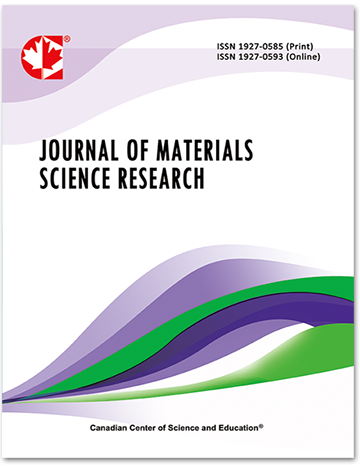Spectroelectrochemical Investigation of 4-Dicyanomethylene 2,6-Dimethyl-4H-Pyran (DDP) Dye with Guanidine Hydrochloride (GuHCl) in Water
- Somasundaram Gayathri
- Rajaraman Vasanthi
- Mahalingam Vanjinathan
- Rajendran Kumaran
Abstract
Interaction of guanidine hydrochloride (GuHCl) with 4-dicyanomethylene-2,6-dimethyl-4H-pyran (DDP) dye were investigated by photophysical and electrochemical techniques. An enhancement in the fluorescence intensity and formation of an isosbestic point revels that the ground state and excited state properties of DDP dye. The nature of interaction between DDP dye and GuHCl is predominantly through hydrogen-bonding even thoughelectrostatic interaction in aqueous phase operate. The existence of electrostatic interaction by current response function describes that the shift in anodic peak potential towards less positive value indicate electrostatic binding. The existence of more than one microenvironment of DDP dye in aqueous phase is elucidated by Electrochemical Impedence Spectroscopy (EIS) studies through Nyquist plots. These plots signify that there exist at least three different micro environments or dye existing in different fluorescence lifetimes with varying of amplitude. Fluorescence spectral techniques along with electrochemical studies are used as efficient tools to elucidate the nature of interaction of a water soluble probe with hydrogen-bonding solutes is elucidated in our study.
- Full Text:
 PDF
PDF
- DOI:10.5539/jmsr.v8n3p6
Journal Metrics
Impact Factor 2022 (by WJCI): 0.583
Google-based Impact Factor (2021): 0.52
h-index (December 2021): 22
i10-index (December 2021): 74
h5-index (December 2021): N/A
h5-median (December 2021): N/A
Index
- CAS (American Chemical Society)
- CNKI Scholar
- Elektronische Zeitschriftenbibliothek (EZB)
- EuroPub Database
- Excellence in Research for Australia (ERA)
- Google Scholar
- Infotrieve
- JournalTOCs
- LOCKSS
- NewJour
- PKP Open Archives Harvester
- Qualis/CAPES
- SHERPA/RoMEO
- Standard Periodical Directory
- Universe Digital Library
- WJCI Report
- WorldCat
Contact
- John MartinEditorial Assistant
- jmsr@ccsenet.org
